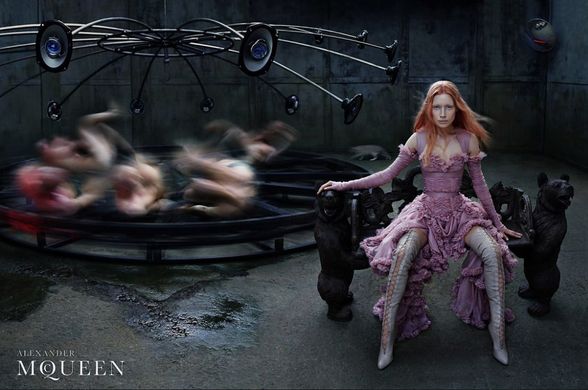 When Peaceful Dumpling first started writing about conscious fashion circa 2013, there were few companies that specifically touted sustainability as their ethos. In the not-so-distant past, round-neck t-shirts in organic cotton or sack-like linen dresses were the only things you could find if you cared about eco-friendly clothing. Fast forward to 2019, and it’s the most flamboyantly luxurious of houses that has taken the helm of sustainable fashion: Kering.
When Peaceful Dumpling first started writing about conscious fashion circa 2013, there were few companies that specifically touted sustainability as their ethos. In the not-so-distant past, round-neck t-shirts in organic cotton or sack-like linen dresses were the only things you could find if you cared about eco-friendly clothing. Fast forward to 2019, and it’s the most flamboyantly luxurious of houses that has taken the helm of sustainable fashion: Kering.
Kering—led by Chair and CEO François-Henri Pinault, husband of Salma Hayek—has made a slew of headlines lately for its green initiatives, including launching its new animal welfare standards this week to ensure better treatment of animals. (While pasture-rearing is not equal to eliminating leather, it’s still a step in the right direction.) Pinault was just named by President Emmanuel Macron as the head of a coalition of top fashion brands, working to set sustainability targets across the industry. Earlier this year, Kering was named the most sustainable company in luxury, apparel, and accessories at the World Economic Forum, and the second most sustainable across all industries.
Considering the reputation of its various brands—Gucci, Saint Laurent, Alexander McQueen, Bottega Veneta, Balenciaga, among others—this is staggering. Luxury brands have long been the antithesis of environmentalism, consuming vast resources to churn out ever-changing products for the few. They operate on the premise that a new collection has to inspire consumption, whether or not that’s necessary for you—or the planet. Kering’s embrace of sustainability comes as a paradigm-shifting move.
On the horizon: the group is developing a process to separate blended textiles (currently, it’s the norm to recycle a garment made of one kind of material). Marie-Claire Daveu, Kering’s Chief Sustainability Officer, says the process “could be the holy grail of the circular economy.” Kering is also looking to develop textiles from fishing nets, which are the single largest kind of plastics in the oceans.
Kering has even committed to upcycling its excess materials and unsold materials. “I think it really is the future,” says Daveu. If upcycling reminds you of high school, cutting an old pair of jeans and sewing it into a mini skirt, you may soon see an haute version trimmed with green and red stripes and anointed with a pair of interlocking G’s.
How should a sustainable consumer feel about the sudden about-face by an ex-nemesis of the environment? First, it must be said that Kering brands use leather, a by-product of the meat industry that still causes animal suffering and greenhouse gases. At the same time, given the rate of changes sweeping the use of animal goods, this may soon come to an end. Not so long ago, Tom Ford became vegan and started eliminating fur from his collections. Gucci went fur-free starting 2018. The elimination of leather is the logical next step—as with fur, it will require a critical mass of consumer awareness for us to reach that point.
Leather use aside, Kering’s public commitment to sustainability spells good news for apparel. If we start seeing organic cotton, recycled synthetic fibers, and upcycled garments at luxury boutiques, even mainstream buyers will inadvertently be making better choices.
But “better choices” might indeed be the key here. Even better than buying a sustainable Gucci dress might be supporting a local sustainable designer. Even more sustainable option might be buying a secondhand dress. These are all valid choices—and fortunately, the increase in our options may normalize sustainable fashion to a point where it’s simply known as “fashion.”
__
Photo: Gucci; Alexander McQueen





